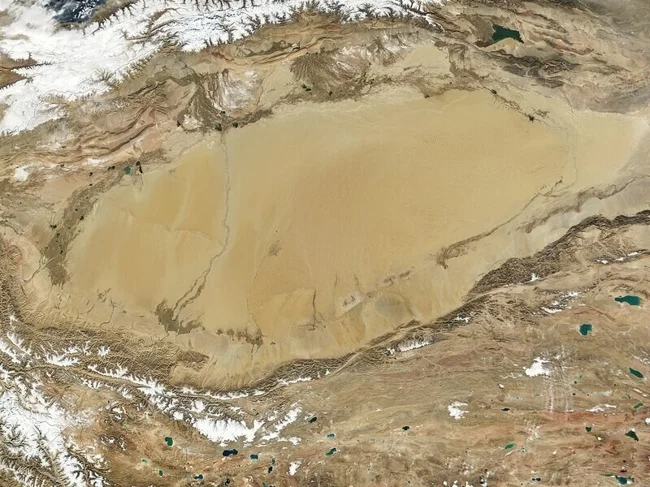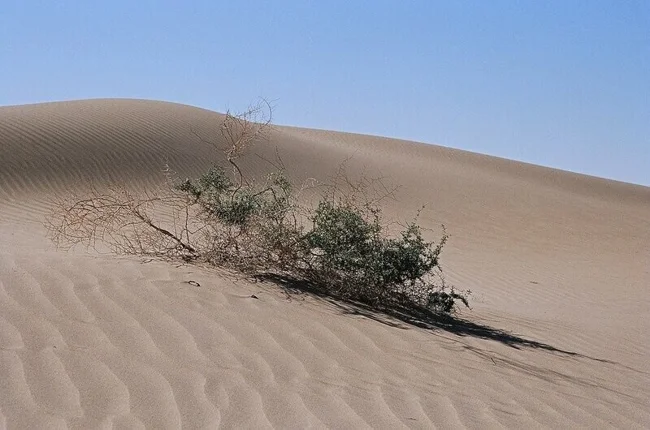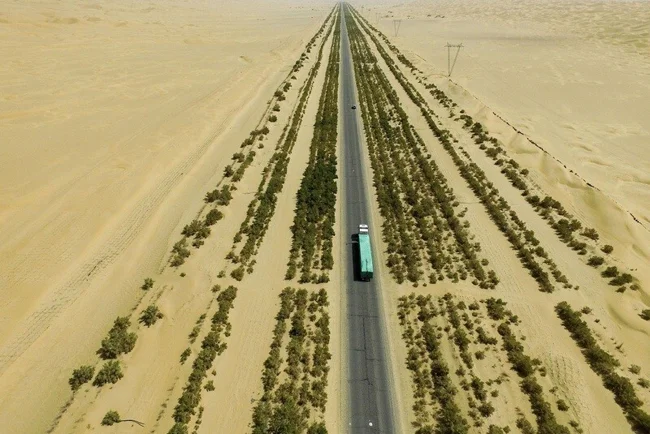It turns out that deserts can hide seas underneath them. 
Sandy deserts are huge dry areas. What's hiding under the sand? Chinese scientists say deserts may hide seas beneath them. They came to this conclusion after discovering a colossal amount of water under the arid Taklamakan region.
Ocean under the desert
The name of the Taklamakan desert translates as abandoned or abandoned place. This is one of the largest deserts in the world: its area is 337,000 km². It is located in China. Due to severe aridity and deep groundwater, there is practically no vegetation in Taklamakan. Only two rivers flow through the desert, and the rest dry up when they enter it. 
Due to human activities, the content of carbon dioxide in the atmosphere is constantly increasing. As you know, part of it is absorbed by forests and oceans, and about 40% remains in the air. By the way, some scientists believe that green spaces are unable to absorb too much carbon dioxide, which means that large reserves of this gas are “hidden” somewhere on our planet.
Geologists decided to study the composition of the air over the desert. Having taken samples and analyzed them, they were very surprised. It turned out that the air over the arid region is clean. But if there is virtually no vegetation in Taklamakan, what then absorbs carbon dioxide? High levels of carbon dioxide are observed over other similar arid and treeless areas. 
Professor Li Yan from the Chinese Academy of Sciences and his colleagues spent ten years trying to figure out where carbon dioxide disappears over the desert. All measurements and sensors regularly showed its absence over Taklamakan. Then scientists decided to study the sand: maybe it had some unusual properties. To their great amazement, experts discovered that it contained alkali, which absorbs carbon dioxide.
Geologists did not stop at this discovery. Soon, several expeditions were organized to different parts of the desert, where scientists, using special equipment, collected soil from the depths of Taklamakan. Water was found in the extracted samples. This allowed scientists to make the assumption that under the desert, at depth, there are caverns filled with liquid. Subsequent soundings confirmed this guess. There really is a whole sea splashing under Taklamakan, which clears the sky above the desert of carbon dioxide.
“Never before have people dared to imagine so much water under the sand. Perhaps our research will help change the understanding of deserts,” says Professor Li Yan 
Scientists have suggested that water from rainfall that rarely falls over the desert, from glaciers in the surrounding mountains, and from rivers flowing into the Taklamakan, seeped into the caverns over many years. It may have taken thousands of years for this amount of fluid to accumulate. As the water traveled, it washed away salts from the soil, delivering them to the sea beneath the desert. As the liquid accumulated beneath the Taklamakan, it began to absorb carbon dioxide from the air over the arid region.
Time bomb
However, scientists are somewhat concerned about this discovery. The amount of carbon dioxide contained in the underground sea may be too high, as it seems to be preserved under the desert. If water finds its way to the surface, it can lead to environmental problems and more. Carbon dioxide itself is not dangerous, but its high concentrations can affect people’s well-being and health.
0 comments

